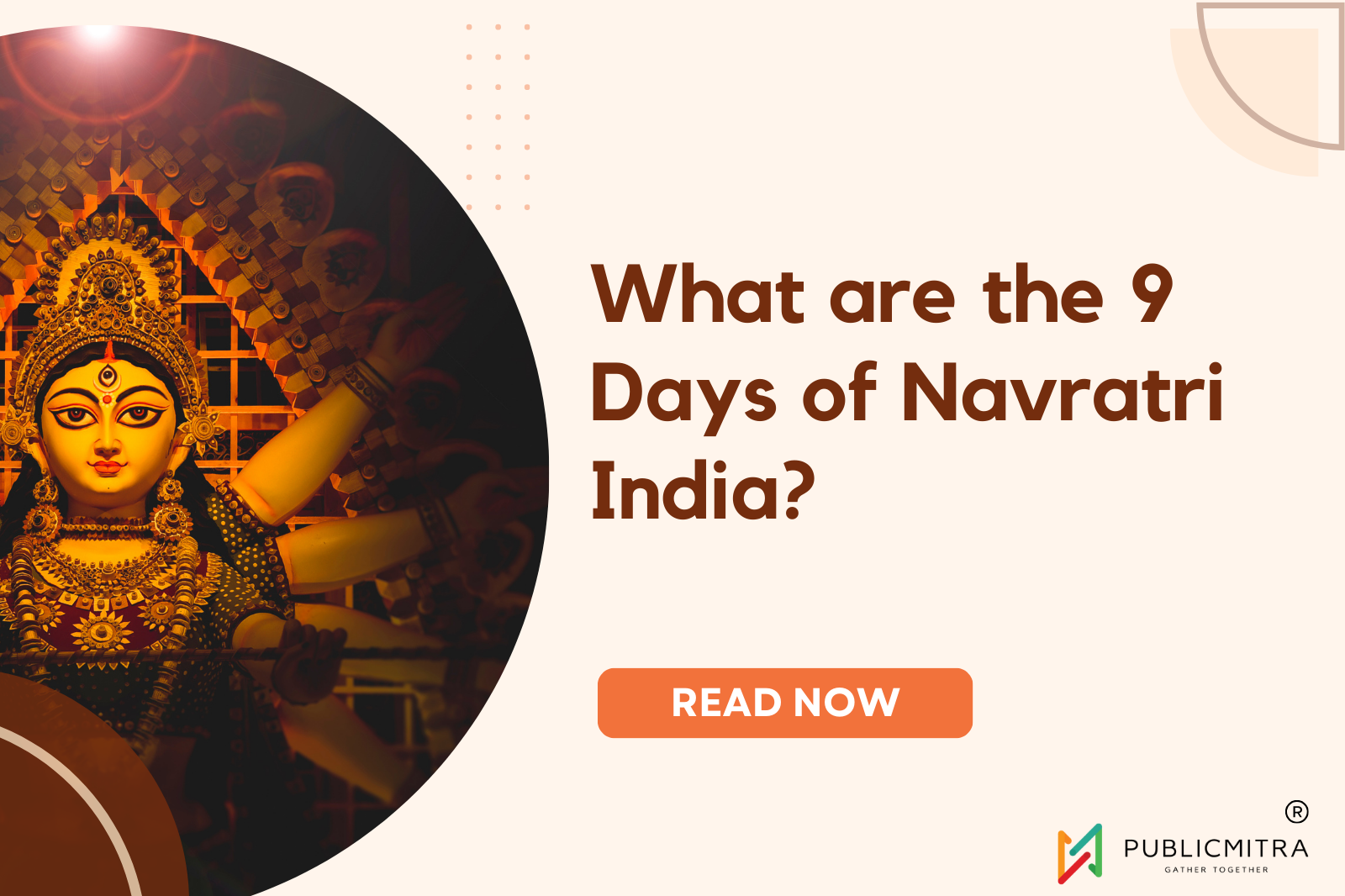What Does Each Day Of The Navratri Festival Symbolise?
In India, the Hindu festival of Navratri is celebrated twice a year. It occurs during the Chaitra(March-April) and Sharada (October-November) months. “Navratri” means “nine nights” in Sanskrit, and the festival lasts nine days in each of these months.
Here are the 9 days of Navratri and The Specialty of Those Days
Navratri, one of the most vibrant and spiritually significant Hindu festivals celebrated in India, spans nine days and nights. Each day holds a unique significance and is dedicated to the worship of 9 different forms of the goddess Durga. Let’s delve into the nine days of Navratri and their specialties
1 – Pratipada: Day 1st
Navratri commences with Pratipada, on the first day. On this day, the goddess Shailputri is worshipped. She is depicted riding a bull and symbolizes strength and determination. Shailputri’s name means ‘daughter of the mountains,’ and her blessings are sought for a strong and unwavering life journey.
2 – Dwitiya: Day 2nd
The second day, Dwitiya, is dedicated to the goddess Brahmacharini. She is a symbol of austerity and devotion. Depicted as carrying a rosary and a water pot (Kamandal), she embodies the pursuit of truth and spiritual knowledge.
3 – Tritiya: Day 3rd
On Tritiya, the goddess Chandraghanta is revered. She is known for her fierce form, riding a tiger and holding weapons like a sword and a lotus. The half-moon (Chandra) adorning her forehead gives her the name Chandraghanta.
4 – Chaturthi: Day 4th
Chaturthi is devoted to the goddess Kushmanda. Her name translates to ‘the cosmic egg,’ signifying her role in the creation of the universe with her divine smile. She is depicted with multiple arms, holding various divine objects.
5 – Panchami: Day 5th
The fifth day, known as Panchami, is dedicated to Skandamata, the mother of Lord Kartikeya (Skanda). She represents motherly love and protection. Skandamata is often depicted holding her son, sitting on a lion.
6 – Shashthi: Day 6th
Shashthi is dedicated to the goddess Katyayani, a warrior form of Durga. She is depicted as a fierce goddess riding a lion, wielding various weapons. Devotees seek her blessings for courage and strength to overcome challenges in life.
7 – Saptami: Day 7th
On Saptami, devotees worship the goddess Kalaratri, who is fierce and dark in complexion. She is believed to annihilate evil forces and protect her devotees from harm. This day signifies the destruction of negativity and the triumph of good over evil.
8 – Ashtami: Day 8th
Ashtami is dedicated to the goddess Mahagauri, symbolizing purity and serenity. She is often depicted in white attire, radiating peace and tranquillity. Devotees seek her blessings for inner peace, harmony, and purification of the mind and soul.
9 – Navami: Day 9th
The ninth and final day is Navami, dedicated to the goddess Siddhidatri. She is the granter of spiritual and worldly accomplishments. Devotees conclude their fasting and offer prayers for enlightenment and the fulfillment of their desires.
9 days of celebrating the goddess
This 9-day festival is celebrated differently across the country by different communities. With festive clothes and traditional food, the event observes all 9 days in pursuit of virtues like strength, purity, devotion, and other aspects of a moral lifestyle. Devotees participate in prayers, fasting, and lively celebrations.








